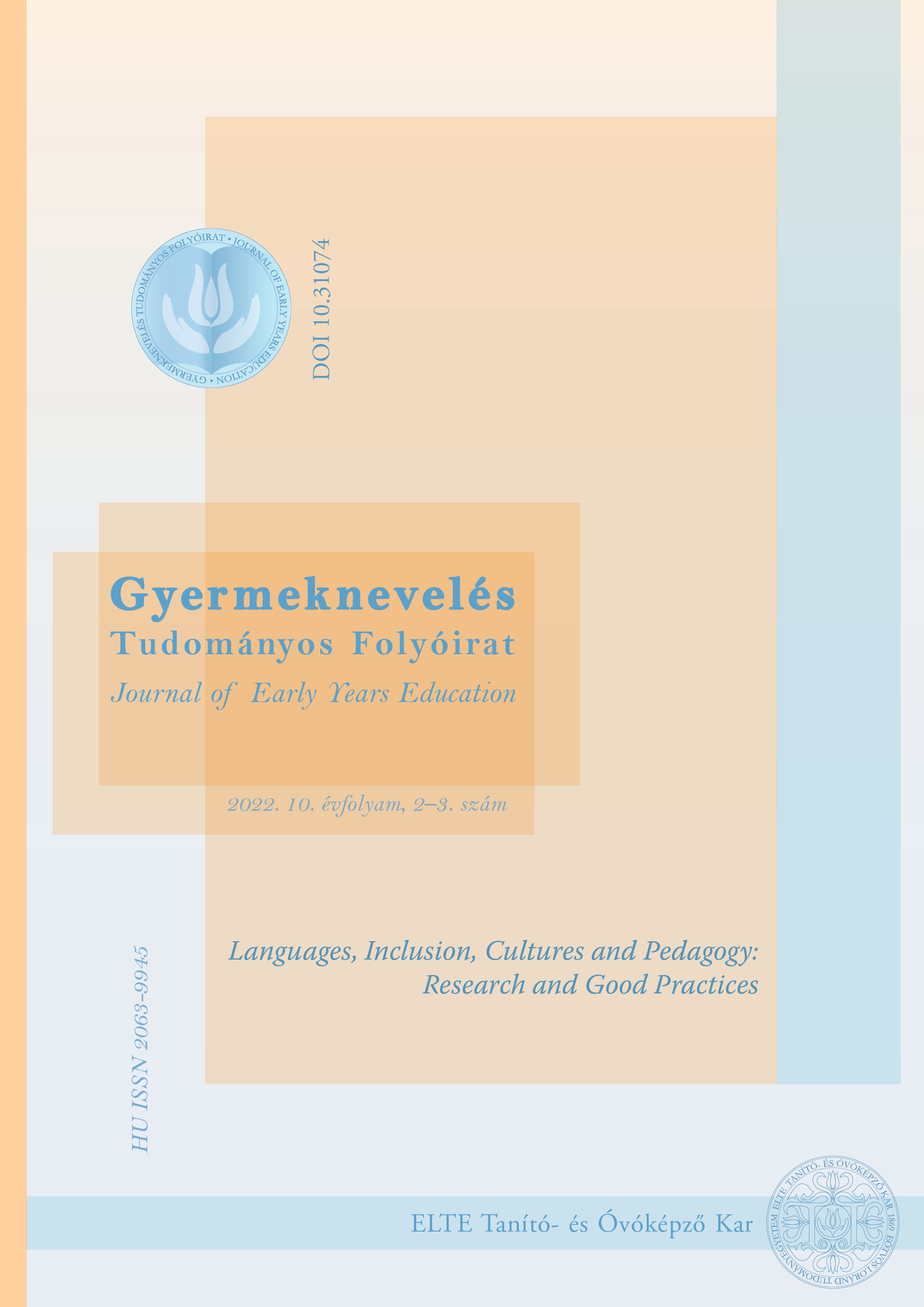Atypical development and the cultural background underlying neurological maturation
DOI:
https://doi.org/10.31074/gyntf.2022.3.72.85Keywords:
atypical development, learning, hyperactivity, autism disorder spectra, neurological maturation, digital ageAbstract
Learning, attention, hyperactivity, and autism spectrum disorders have common neurological roots. They are manifested in differences in the development and functioning of the neurological processes involved in neurological maturation. Neurological maturation is a product of the cultural evolution of Homo Sapiens. The transition to an agricultural, ranching lifestyle required behavior and cognitive functions that were markedly different from the previous foraging, nomad lifestyle. The result was a more precise and reliable ability to control and think systematically, which later became the base of literacy. The recent spread of learning difficulties, control disorders, and autism spectrum are due to the vulnerability of brain functions that are very new to human development, most of all executive functions. There are significant changes in culture since the last century, whereby the developing nervous system receives less natural cultural developmental effects but more harmful agents than before. Changes in the environment change the way the brain develops. Atypical neurological development is a consequence and a sign of a new era. It is only considered a disorder if education fails to find an appropriate response to the challenge.
Downloads
References
Barkley, R., Koplowitz, S., Anderson, T. & McMurray, M. B. (1997). Sense of time in children with ADHD: Effects of duration, distraction, and stimulant medication. Journal of the International Neuropsychological Society, 3(4), 359–369. https://doi.org/10.1017/S1355617797003597
Becker, K. G. (2010). Autism and urbanization. American Journal of Public Health, 100(7), 1156–1157. https://doi.org/10.2105/AJPH.2009.191007
Campbell-McBride, N. (2004). Gut And Psychology Syndrome: Natural Treatment Of Autism, ADHD, Dyslexia, Dyspraxia, Depression And Schizophrenia. Medinform Publishing.
Campbell-McBride, N. (2010). Gut and Psychology Syndrome: Natural Treatment for Autism, Dyspraxia, A.D.D., Dyslexia, A.D.H.D., Depression, Schizophrenia. (2nd edition.) Medinform Publishing.
Cotgreave, I. A. (2005). Biological stress responses to radio frequency electromagnetic radiation. Archives of Biochemistry and Biophysics, 435(1), 227–240. https://doi.org/10.1016/j.abb.2004.12.004
Denckla, M. B., Rudel, R. G., Chapman, C. & Krieger, J. (1985). Motor proficiency in dyslexic children with and without attentional disorders. Archives of Neurology, 42(3), 228–231. https://doi.org/10.1001/archneur.1985.04060030042008
Feingold, B. F. (1974). Why Your Child is Hyperactive. Random House.
Ferreri, F., Curcio, G., Pasqualetti, P., De Gennaro, L., Fini, R. & Rossini, P. M. (2006). Mobile phone emissions and human brain excitability. Annals of Neurology, 60(2), 188–196. https://doi.org/10.1002/ana.20906
Greenspan, S. I. & Wieder, S. (1999). A functional developmental approach to autism spectrum disorders. Journal of the Association for Persons With Severe Handicaps. 24(3), 147–161. https://doi.org/10.2511/rpsd.24.3.147
Gyarmathy, É. (2009). Atipikus agy és a tehetség I. – Tehetség és a neurológiai hátterű teljesítményzavarok valamint az Asperger szindróma. [The atypical brain and talent I. – Talent, neurologically based performance disorders and the Asperger syndrome.] Pszichológia, 29(4), 377–390. https://doi.org/10.1556/Pszicho.29.2009.4.4
Gyarmathy, É. (2012). Diszlexia a digitális korszakban. [Dyslexia in the Digital Age.] Műszaki Könyvkiadó.
Froehlich, T. E., Anixt, J. S., Loe, I. M., Chirdkiatgumchai, V., Kuan, L. & Gilman, R. C. (2011). Update on environmental risk factors for attention-deficit/hyperactivity disorder. Current Psychiatry Reports, 13(5), 333–344. https://doi.org/10.1007/s11920-011-0221-3
Hartmann, T. (1995). ADD Success Stories. Underwood Books.
Healy, J. M. (1990). Endangered Minds: Why our Children Don’t Think. Touchstone.
Jaarsma, P. & Welin, S. (2011). Autism as a natural human variation: Reflections on the claims of the neurodiversity movement. Health Care Analysis, 20(1), 20–30. https://doi.org/10.1007/s10728-011-0169-9
Lewandowski, T. A., Bartell, S. M., Yager, J. W. & Levin, L. (2009). An evaluation of surrogate chemical exposure measures and autism prevalence in Texas. Journal of Toxicology and Environmental Health, Part A, 72(24), 1592–1603. https://doi.org/10.1080/15287390903232483
Leslie, K. E. & Koger, S. M. (2011). A significant factor in autism: Methyl mercury induced oxidative stress in genetically susceptible individuals. Journal of Developmental and Physical Disabilities 23. 313–324. https://doi.org/10.1007/s10882-011-9230-8
Matsuzaki, H., Iwata, K., Manabe, T. & Mori, N. (2012). Triggers for autism: Genetic and environmental factors. Journal of Central Nervous System Disease. https://doi.org/10.4137/2FJCNSD.S9058
Merzenich, M. M. (2001). Cortical plasticity contributing to child development. In McClelland, J. & Siegler, R. S. (Eds), Mechanisms in Cognitive Development (pp. 67–96). Lawrence Erlbaum Associates Publishers.
Pauc, R. (2005). Comorbidity of dyslexia, dyspraxia, attention deficit disorder (ADD), attention deficit hyperactive disorder (ADHD), obsessive compulsive disorder (OCD) and Tourette’s syndrome in children: A prospective epidemiological study. Clinical Chiropractic, 8(4), 189–198. https://doi.org/10.1016/j.clch.2005.09.007
Piek, J. P. – Pitcher, T. M. & Hay, D. A. (1999). Motor coordination and kinaesthesis in boys with attention deficit-hyperactivity disorder. Developmental Medicine and Child Neurology, 41(3), 159–165. https://doi.org/10.1017/S0012162299000341
Schonfeld, I. S., Shaffer, D. & Barmack, J. E. (1989). Neurological soft signs and school achievement: The mediating effects of sustained attention. Journal of Abnormal Child Psychology, 17, 575–596. https://doi.org/10.1007/BF00917723
Ward, N. I. (2001). Hyperactivity and a previous history of antibiotic usage. Nutrition Practitioner, 3(3), 12.
Williams, E. L & Casanova, M. F. (2010). Autism and dyslexia: A spectrum of cognitive styles as defined by minicolumnar morphometry. Medical Hypotheses, 74(1), 59–62. https://doi.org/10.1016/j.mehy.2009.08.003
Yoshimasu, K., Kiyohara, Ch., Takemura, Sh. & Nakai, K. (2014). A meta-analysis of the evidence on the impact of prenatal and early infancy exposures to mercury on autism and attention deficit/hyperactivity disorder in the childhood. Neurotoxicology, 44, 121–131. https://doi.org/10.1016/j.neuro.2014.06.007
Additional Files
Published
How to Cite
Issue
Section
License
Copyright (c) 2022 Author

This work is licensed under a Creative Commons Attribution-NonCommercial-ShareAlike 4.0 International License.

